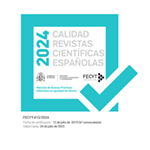Open Peer Review of article Vol.21 N.2
Military AI, sacred violence and war in the Middle East
Chris Hables Gray
Section: Miscellany
Reviewer A:
Please, comment on the most relevant aspects (positive points and areas to improve) of the reviewed article.
This article provides an overview of the military technology currently employed by Israel in the war in Gaza. The author links these technologies with Biblical rhetoric and policy in order to show how the IDF legitimizes its ongoing violence against Palestine. The author provides a timely and much-needed perspective on the current war through a discussion of historical policy changes and cultural changes within the IDF. The author focuses on the Gospel AI, which is now in use as an automated target-selection system and has increased the number of targets generated per day significantly. The author appropriately connects the use of the Gospel to other military technologies developed and employed by the IDF and relevant technology companies. The author provides a provocative statement, in light of postmodern war theory, that these technologies will ultimately not facilitate Israeli victory.
Improvement could be made in the description of the AI by being more specific on the link between data collection methods, data types, and AI decision-making. In addition, the author might comment more directly on changes in the IDF ethical code and when these occurred, relative to other policies discussed.
Would you suggest any changes or make any recommendations to improve the quality of the article?
The article is high quality and no significant improvements are needed prior to publication. It is well-cited and includes references to current literature and relevant resources. The author provides an adequate overview of all topics and connects each topic sufficiently.
Thank you for allowing me to review this article, I enjoyed reading it and hope to review for the journal again!
Reviewer B:
Is the article well written and organised. Is it easy to read?
Yes. The article provides a very comprehensive report on the ongoing war and the AI technology being used. Starting with a brief historical introduction to this process, the article is designed in a progressively deepening structure. The coherence between subheadings is very good. Only the end of Necrotactics, Domicide, Urbanicide, Apartheid deserves a minor correction. A note on the relationality of AI and this conceptual multiplicity could be added. But it can also be kept as it is.
Does the article include correct links and references supporting the argument?
Yes. But there are some missing references: p.5, the indented quotation starting with "Another infantryman;" p.14, the indented quotation starting with "While supporters of the secular PLO;" p.14, the text in quotation marks starting with: "We want to break their bones ;"p.18, the indented quotation starting with "For the first time that we can remember."
Please, comment on the most relevant aspects (positive points and areas to improve) of the reviewed article.
This essay aims to understand how AI technology results in dehumanization in postmodern wars like the one that broke out in Palestine after October 7, 2023. The main body of the article, spanning from “An AI Named Gospel” to “Winning the Battles; Losing the War,” focuses on the Israeli side’s employment of discourses and actions that deepen dehumanization via AI technology (pp. 7–14), and is fascinating. In its current form, the essay engages in extended recitations of war discourses and AI practices. In this sense, it is a quick Minerva flight into an unfolding phenomenon. The article has a strong social concern. The originality of the article comes from the fact that it demonstrates how the disoriented violence of the last few months has taken on an inhuman character through artificial intelligence. The foresight for the near future is another important outcome, indicating the end point of this dehumanization process. The article also constitutes an important almanac of recent Israeli violence. It shows the extent of this vio-lence and dehumanization with examples from a wide range of authorities and fields.
Would you suggest any changes or make any recommendations to improve the quality of the article?
Although not in the scope of this article, the AI technology and war rhetoric used by the other side (Hamas and other subjects) can be a complementary part of the article. In this sense, the section of the article that mentions necrotactics offers hints for a new and follow-up article.
Reviewer C:
Is the article well written and organised. Is it easy to read?
The article's structure and organization are commendable. The author has effectively presented their ideas in a logical and coherent manner, making it easy for the reader to follow the flow of the paper.
Please, comment on the most relevant aspects (positive points and areas to improve) of the reviewed article.
While the text demonstrates a strong grasp of the subject matter, it does contain some minor typos that could be addressed. These typos, such as spelling errors or grammatical inconsistencies, while not detracting significantly from the overall quality of the paper, can impact the reader's experience. Therefore, a thorough proofreading and editing pass would enhance the paper's professionalism and readability. The bibliography could benefit from a more careful revision. While the references provided are relevant to the subject, there may be inconsistencies or formatting issues that need attention.
It might be worthwhile to acknowledge the settler colonial character of the war, as this aspect can offer valuable insights into the historical and social dynamics at play. Incorporating references to key works in settler colonial studies or related fields would enrich the paper's scholarly foundation and enhance its contribution to the discourse.
The text included some modifications before publication












